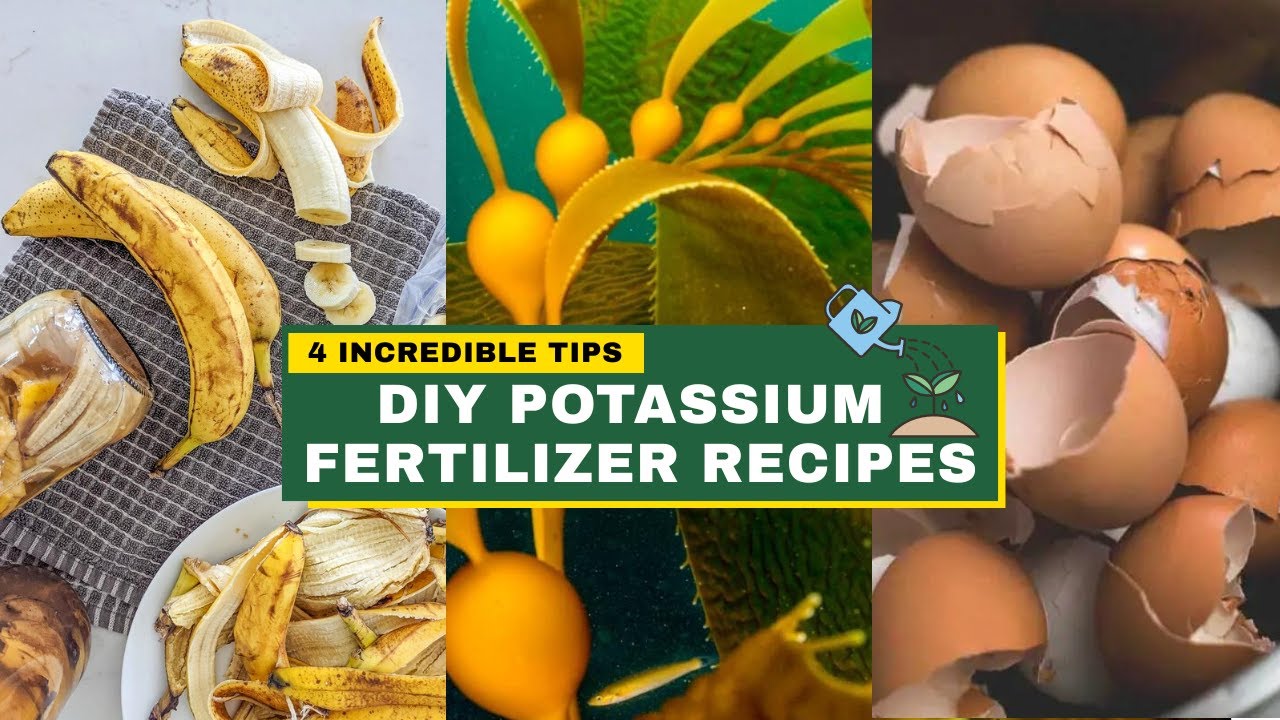As a gardener, you likely know that fertilizing is essential to help plants grow strong and healthy. But with so many options on the shelf, it can be confusing to decide which type of fertilizer is best. Lately you’ve been hearing about “high potassium” fertilizers and wondering – what exactly does that mean?
In this article, we’ll demystify high potassium fertilizers, explain what potassium does for plants, and help you determine when to use these nutritious mixes.
What is Potassium and Why Do Plants Need It?
Potassium is one of the three major macronutrients plants need, along with nitrogen and phosphorus. It’s represented by the chemical symbol K on fertilizer labels.
This mineral nutrient is involved in many key processes within plants:
- Regulates water and nutrient transport through tissues
- Activates enzymes for photosynthesis and energy production
- Controls opening and closing of stomata for gas exchange
- Aids in fruit formation and quality
- Strengthens stems and improves disease resistance
Without adequate potassium plants can experience reduced growth, weaker stems and stalks, smaller fruits and increased susceptibility to disease and drought stress. It’s clear this nutrient is vital for optimal plant performance.
What are High Potassium Fertilizers?
Now that we know why potassium matters, what exactly makes a fertilizer “high potassium”?
These fertilizers simply contain higher concentrations of soluble potassium than typical balanced fertilizers. This gives plants an extra boost of this essential nutrient.
Instead of a relatively equal NPK ratio (like 10-10-10), high potassium formulas offer ratios skewed heavily towards potassium (like 0-0-25).
Common high potassium fertilizers have NPK ratios like:
- 0-0-22
- 0-0-50
- 0-5-34
The high potassium content allows you to correct potassium deficiencies and target specific plant needs.
Key Benefits of Using High Potassium Fertilizers
Giving plants a potassium supercharge through high K fertilizers provides several key benefits:
- Corrects potassium deficiencies quickly
- Maximizes fruit yields, quality, flavor, and shelf life
- Hardens off stems to prevent lodging
- Fortifies plants against environmental stresses
- Builds carbohydrate reserves for winter
- Improves drought tolerance through water regulation
- Strengthens plants’ immune response to diseases
It’s easy to see why high potassium fertilizers are so popular among fruit and vegetable gardeners seeking prized produce. But all plants can gain advantages from these K-rich mixes at strategic times.
When to Use High Potassium Fertilizers
Here are some of the best times and situations to reach for these fertilizers:
-
Fruit and vegetable plants – Use high potassium formulas when plants begin flowering/fruiting through harvest for top yields.
-
Addressing deficiencies – If soil test shows low potassium levels, use to correct. Signs of deficiency include stunted plants, weak stems, and spotty or small fruits.
-
Preparing for dormancy – Applying in fall helps plants harden off for winter.
-
Drought resistance – Use high potassium fertilizer to reduce water loss in dry conditions.
-
Disease prevention – The potassium boost fortifies plants against common diseases.
-
Soil conditioning – Potassium helps improve overall soil quality and microbial activity.
While beneficial in the right situations, avoid overapplying high potassium fertilizers or using when plants don’t need them, as nutrient imbalances can occur.
High Potassium Fertilizer Options
When shopping for a high potassium fertilizer, you’ll encounter both synthetic and organic options including:
-
Langbeinite – A mined mineral fertilizer providing potassium and magnesium.
-
Greensand – Provides potassium along with trace minerals in a slow-release organic form.
-
Sulfate of Potash – A readily available, refined potassium source.
-
Potassium Nitrate – A synthetic fertilizer combining nitrogen and potassium.
-
Wood Ashes – Supply potassium and other nutrients in a natural form.
-
Kelp Meal – An organic amendment high in potassium and micronutrients.
Look for options suitable for your gardening style and needs. Blends like tomato fertilizers commonly offer potassium-rich formulas.
Now that you understand the basics of high potassium fertilizers, you can provide your plants the right amount of this essential nutrient at the critical times they need it most. Proper fertilizing is one of the best things you can do to help your garden thrive.
Customer Reviews and Photos
when you sign up for our emails >>>>
What Fertilizer Is High In Potassium?
FAQ
What is the best source of potassium for plants?
What is the fastest way to add potassium to soil?
What is the best potassium feed for plants?
What is high potassium fertilizer used for?
High-potassium fertilizers can be used to feed a variety of plants, including fruits, vegetables, flowering perennials, and shrubs. It is also frequently recommended for feeding lawns to help them survive hot, dry summers Obviously, high-potassium fertilizers work wonders for plants growing in potassium-deficient soils.
What could cause an elevated potassium level?
An elevated potassium level, known as hyperkalemia, can be caused by various factors. Some common causes include kidney problems, certain medications (like ACE inhibitors and potassium-sparing diuretics), adrenal gland disorders, excessive intake of potassium-rich foods or supplements, and conditions that lead to cell damage (such as trauma or burns). Hyperkalemia can be serious, so it’s important to address the underlying cause and work with a healthcare provider to manage potassium levels.
What fertilizers are high in potassium?
Fertilizers that are high in potassium include: potassium chloride, potassium sulfate, burned cucumber skins, sulfate of potash magnesia, Illite clay, kelp, wood ash, greensand, granite dust, sawdust, soybean meal, alfalfa, and bat guano. Some of these fertilizers also contain nitrogen, phosphorus, and other important nutrients for plants.
Is potash a high-potassium fertilizer?
However, potash is a type of high-potassium fertilizer that includes water-soluble potassium from mined and/or manufactured sources. Potash commonly contains potassium carbonate and potassium chloride (also called muriate of potash). This potassium-rich fertilizer allows you to get more bang for your buck.

